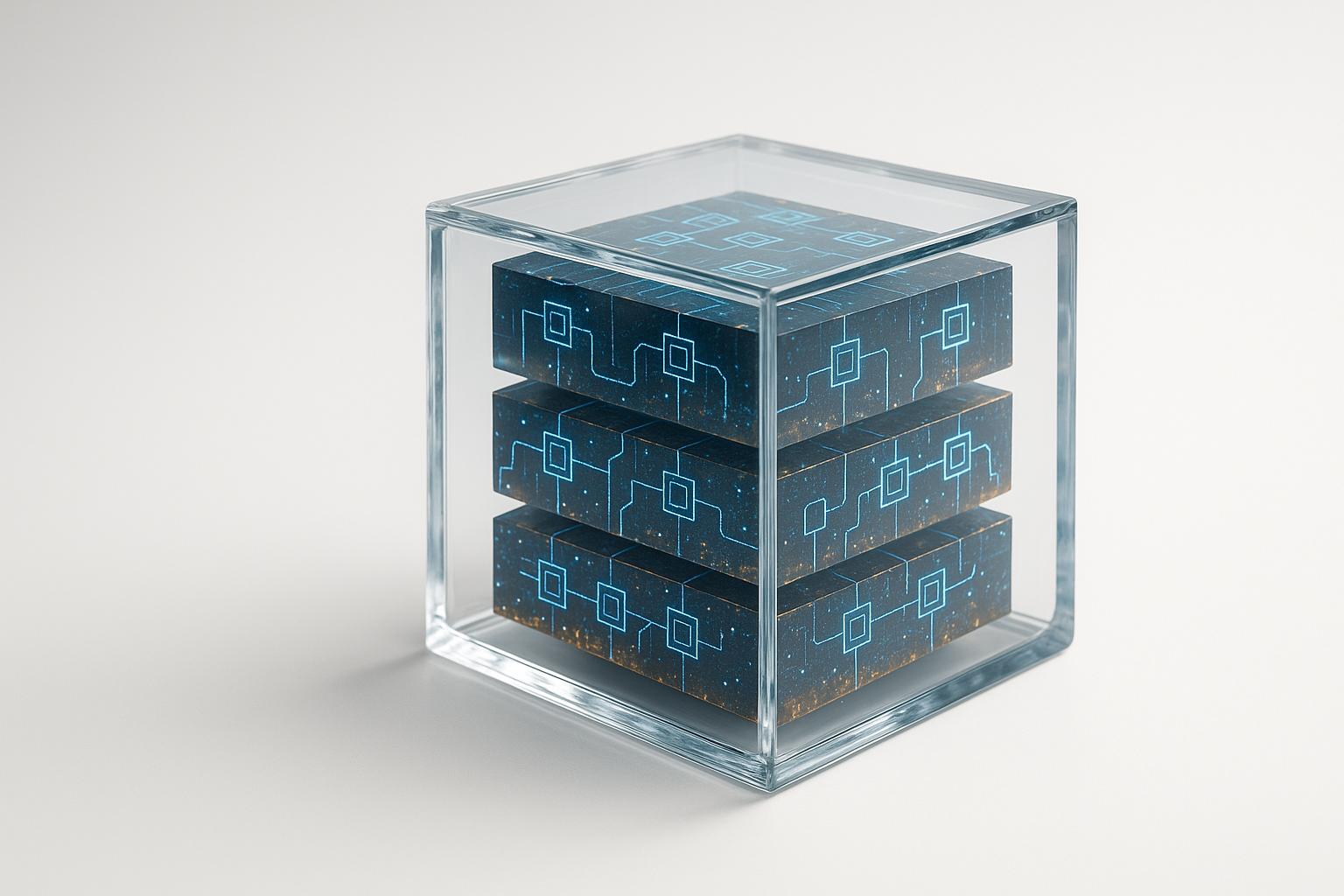Deep learning has changed how we find hidden watermarks in digital stuff. Old ways used manual feature setting up and stats methods, but deep learning does it on its own, with better results (90%+ find rates) and can change as threats do. Big steps forward include using convolutional neural nets (CNNs) to spot small signs, moving learning to make models fit certain jobs better, and making tough watermarks with generative adversarial nets (GANs). These tools are now all over in areas like media, law, and health to keep ideas safe and check content is real.
Yet, problems are still there. Bad attacks can find and use weak spots in models, and needing a lot of computing power can slow things down. Future steps aim to make finding systems tougher against attacks, teach models with more varied data, and mix methods for top results. Tools like ScoreDetect show these new steps, mixing watermarking, AI for finding, and blockchain for keeping content safe.
Deep Learning based Zero Watermarking for Authentication of Medical Records
How Deep Learning Improves Steganalysis
Deep learning has transformed watermark detection, offering unmatched precision and flexibility. By moving away from traditional methods, it has redefined how hidden content is detected, setting the stage for significant technical advancements.
Deep Learning vs. Older Methods
Traditional machine learning methods differ greatly from deep learning when it comes to detecting hidden content. Older approaches relied on manual feature engineering, which required extensive expertise and often produced inconsistent results. In contrast, deep learning automates this process, delivering more reliable and accurate outcomes.
| Aspect | Traditional Methods | Deep Learning |
|---|---|---|
| Feature Engineering | Manual, requiring expert input | Learns features directly from data |
| Accuracy | Varies by content type | Consistently high (90%+ detection rates)[2] |
| Adaptability | Needs redesign for new threats | Easily retrained for different attacks[3] |
| Development Time | Time-intensive manual setup | Faster deployment via transfer learning |
| Security | Vulnerable to reverse engineering | Opaque models add a security layer |
Deep learning eliminates the need for manual feature extraction by automatically learning patterns from data[3]. This makes it far more efficient, as experts no longer need to design algorithms tailored to every specific watermarking technique. Additionally, deep learning models can be quickly retrained to counter new threats, providing a level of adaptability and security that traditional methods simply can’t match.
Major Advances in Deep Learning Models
The advantages of deep learning are further amplified by advanced models that push watermark detection to new heights.
Convolutional Neural Networks (CNNs) are the cornerstone of modern steganalysis, excelling at identifying subtle patterns in digital media. For example, systems like SA-CNN have achieved impressive detection rates, with accuracy reaching 90% when identifying hidden content under varying hiding rates (0.1 to 1.0 bits per pixel)[2].
Transfer learning has emerged as a key innovation, allowing pre-trained models to be adapted for specific tasks. By using this approach, models like VGG16 have reached an accuracy of 88.40% in classifying hidden content[2]. This technique leverages pre-existing knowledge – patterns and features learned during training – to improve performance on related tasks, saving both time and resources[1].
Generative Adversarial Networks (GANs) have introduced a new level of sophistication by creating highly effective watermarking systems. These models learn complex insertion patterns, optimizing watermarks to resist detection while maintaining the visual quality of the original content. When paired with large datasets, GANs allow for the creation of watermarks that balance capacity and imperceptibility without requiring new algorithms for each application[3]. This versatility is particularly useful for platforms like ScoreDetect, which handle a wide range of content across industries.
Better Defense Against New Threats
Deep learning’s ability to adapt makes it far more effective than traditional methods in combating evolving watermarking techniques. Its inherently opaque architecture adds a layer of security, making it much harder for attackers to reverse-engineer the detection process.
Two key strategies – fine-tuning and feature extraction – help deep learning models stay ahead of new threats. Fine-tuning involves training existing models on updated datasets, while feature extraction uses pre-trained models to identify patterns in new watermarking schemes[1]. Additionally, cross-domain transfer learning has proven highly effective, enabling models trained on one type of content to adapt to entirely different scenarios. These continuous updates ensure that steganalysis remains a step ahead of increasingly complex threats.
Challenges in Deep Learning Watermark Detection
While deep learning has made impressive strides, watermark detection still faces some tough hurdles. These challenges highlight system vulnerabilities and point to areas that need improvement.
Common Weaknesses in Watermarking Systems
Adversarial attacks are among the biggest threats to deep learning–based watermark detection. These attacks exploit weaknesses in neural networks by introducing tiny, almost invisible changes to images, which can trick detection algorithms. For example, using the Fast Gradient Method with a perturbation value as small as 0.0013 caused the accuracy of YeNet to drop drastically to 47.867% [4].
Another challenge comes from content-agnostic attacks, which don’t rely on specific trigger data. Instead, attackers can choose different elements from the original watermark, making it harder for detection systems to respond effectively.
Embedding watermarks into machine learning parameters creates detectable statistical patterns, making them susceptible to reverse engineering. On top of that, adversarial watermarking techniques often struggle with durability, as fine-tuning or retraining models can weaken the watermark’s effectiveness.
In December 2024, the BlockDoor framework demonstrated just how vulnerable these systems can be, reducing watermark validation accuracy by up to 98% across various datasets and neural network architectures.
Current Deep Learning Model Limitations
Beyond these vulnerabilities, issues with system design and resource availability also impact detection performance. Deep learning, while powerful, comes with its own set of challenges.
Training advanced models requires a lot of computational power and time. When datasets are limited or don’t represent a wide range of scenarios, models risk overfitting, which makes them less adaptable to new watermarking techniques. This becomes a significant problem when systems encounter watermarking methods they weren’t trained to recognize.
Another issue is the lack of security-focused design. Many watermarking solutions fail to account for potential exploits, and they often underestimate the evolving capabilities of attackers. The rise of Machine-Learning-as-a-Service (MLaaS) adds another layer of complexity, opening doors to covert channels or data exfiltration attacks. Inconsistent security enforcement – without a clear, unified approach – only widens these gaps.
Why Detection Techniques Must Keep Evolving
To address these challenges, detection methods need to evolve continuously. The fast pace of cyber threats demands that watermark detection systems improve just as quickly [5].
Current detection tools still struggle with accuracy. Studies show that AI text detection often falls short, with accuracies under 80%, which highlights ongoing issues with precision [5].
Resource demands are another bottleneck. The high computational costs of detection systems can slow down responses to new threats, leaving systems exposed. For instance, evasion tactics like paraphrasing can easily bypass static detection rules, further complicating the task.
In July 2024, researchers highlighted these challenges by using ChatGPT 4.0 to create phishing messages based on Cialdini’s six principles of influence. This experiment revealed vulnerabilities and emphasized the need for smarter countermeasures [5].
One promising direction is hybrid frameworks that combine supervised learning, unsupervised clustering, and watermarking to strengthen detection. Organizations also need to expand their datasets and test their systems under adversarial conditions to better reflect real-world scenarios. For tools like ScoreDetect, frequent algorithm updates are critical to staying ahead of emerging threats.
Adapting detection strategies is not optional – it’s essential to keep up with increasingly sophisticated attacks. Collaboration between watermarking experts and AI researchers will play a key role in ensuring that detection systems remain effective. By working together and embracing continuous improvement, these systems can meet the challenges of an ever-changing threat landscape.
sbb-itb-738ac1e
Ways to Find Watermarks with Deep Learning
Finding watermarks with the help of deep learning has moved far from the old ways. By using good sets of data, the right models, and full checks, new methods can spot hidden watermarks with great skill.
Usual Steps to Detect Watermarks
The work starts with making a big group of base images. A common set used is the BOSSBase dataset, which has 10,000 black and white images at 512×512 pixels. To make this set bigger, you can mix it with the BOWS2 set using the S-uniward code trick, making twice as many images ready for use and tests [7].
Next, we put watermarks on those images. This uses code tricks to add watermarks to some of the base images, making "stego" images. It’s key to have the same count of base and stego images to keep training fair [7].
To help the model learn better, we use tricks like data growing (like turning, scaling, cutting) [7]. Steps to get the data ready, like changing size, turning to black and white, and setting norms, make the set better. The set is then split, usually giving 80% for training, 20% for checks, and a separate set for final tests to check quality without bias.
When the set is ready, the focus moves to picking the best deep learning build for good watermark finding.
Top Deep Learning Builds
After getting the data set, there are several deep learning styles you can use, each good for different parts of watermark finding. These ways often do better than the older, hand-done methods.
- Convolutional Neural Networks (CNNs): CNNs are great for pulling out and putting in features. They are good at seeing deep, hidden details in images. For example, CNNs have reached a testing PSNR (Peak Signal-to-Noise Ratio) of 44.48 dB and an SSIM (Structural Similarity Index) of 0.9997, showing they are clear and strong [8].
- Autoencoders: These are handy for both putting in and taking out watermarks. Autoencoders that clear noise, for one, help keep the watermark clear when taking it out. One report showed an NC (Normalized Correlation) score of 0.9996 on test data, proving they keep the look of the image good [8].
- Ensemble Models: By mixing deep learning with usual machine learning ways, ensemble models fight overfitting issues. They have reached AUC (Area Under the Curve) scores of up to 96.2% in hard sorting jobs [9].
New builds like GANs (Generative Adversarial Networks) and Transformers are also getting popular. GANs work well against hard attack styles, while Transformers, with their focus tricks, are starting to set new ways to find things in a series.
| Building Style | Main Use | Top Benefit | Key Measure |
|---|---|---|---|
| CNN | Pulling out features | Very clear and strong | PSNR: 44.48 dB, SSIM: 0.9997 |
| Autoencoder | Making and pulling out | Keeps picture good | NC score: 0.9996 |
| Group Models | Sorting jobs | Cuts down fitting too much | AUC: up to 96.2% |
| GANs | Top-level watermarking | Deals with hard attacks | Changes with use |
| Transformers | Finding patterns | Uses focus tricks | New and growing |
Deep learning not only makes the process of finding watermarks fast but also cuts out the need for a lot of hands-on work by learning and knowing watermark shapes on its own.
Strong Effects in Many Work Areas
Deep learning has shown big changes in many work areas by fixing real problems. As more digital stuff is made, many businesses use high-tech watermark finding to keep their things safe and true.
How Different Work Areas Use It
- Media and Shows: This tech is key in keeping digital stuff safe. Big services put unseen watermarks on photos to track and check if they are real.
- Legal and Law Offices: These groups use deep learning to find wrong use of copy rights and show clear proof of use without asking, making sure content is checked right.
- Web Safety: Models like CNN look through digital files for hidden bad software. With more than 92% correct finds, these tools stop hidden dangers online [12].
- Schools and Study Groups: Watermarks keep study work safe and save smart ideas. They also make it safe to share data, even in IoT setups [11].
- Health Care: Important health info like patient files and test photos are kept safe by watermarks, keeping rules and data true.
Mixing with Smart Platforms Like ScoreDetect

ScoreDetect shows how deep learning can mix into systems to protect content. This setup blends unseen watermarks, smart web checks, and blockchain to stop wrong use and keep things safe.
- Web Checks for Watching: ScoreDetect uses smart check tools with a 95% win rate to find wrong uses online. It can work on data like photos, sound, and videos [12].
- Blockchain for Owning Checks: It uses a code to show who owns content instead of keeping files, giving a proof of ownership while keeping things private.
- Made for the Need Models: It doesn’t use one way for all, but makes its deep learning work just right for each need. This makes better results [13].
These ways not only make content safer but also easier to manage for many businesses.
Auto Steps for Content Owners
ScoreDetect has tools to make protecting content easy by using auto steps. With its tools like WordPress plugin and Zapier mix, businesses can manage watermarks, checks, and removal tasks without doing it by hand.
- Zapier Mix: By linking with over 6,000 web apps, ScoreDetect lets content owners make custom steps. For example, a media group can set a post to get a watermark, check for wrong use, and ask for a takedown, all by itself.
- Big-Time Safety: Its top plan watches and protects all the time. Mixing unseen watermarks with auto finding and removal alerts, it saves time and effort but keeps content very safe [12].
These auto ways work with many file types and easily with current business tools. Fields from money and banks to government places are using it, as it makes keeping content safe easy without stopping daily work.
Final Thoughts and What’s Next
Deep learning has changed the game for finding watermarks and now kicks old ways to the curb. It protects digital content much better thanks to its advanced skills.
Main Benefits
Deep learning means big wins for watermark finding. For example, its neural networks can be up to 99.78% right – far better than old tools like SVM and Logistic Regression. These networks are also top-notch at seeing patterns fast and clearly [5]. This sharpness lets groups catch risks that used tools might miss.
One key plus is how deep learning runs when putting in and pulling out watermarks, even if smart AI models attack [10]. These models can do many tasks, like picking the best spots for watermarks or setting how strong to make them. They get better over time, which keeps them ahead of new threats [14]. A good show of this is ScoreDetect, using hidden watermarking and smart web looking to get around blocks and take down bad content fast – with 95% and 96% success.
These leaps forward clear the way for more growth in this area.
Future Developments
Looking forward, experts want to fix current model flaws. They’re trying out adversarial training to toughen up watermark finding. Adding this to self-taught learning and adjusting to new challenges could make systems better at dealing with things like image changes. Using many models at once, or ensemble learning, looks hopeful too [6].
There’s also cool stuff on the horizon in hiding info in text, not just images and videos [15]. At the same time, there’s work to make watermark systems strong against AI attacks [10]. As cyber crooks use smarter ways to wipe watermarks, experts are creating new embedding ways that can stand up to these attacks.
Tools like ScoreDetect will gain from these changes. By using blockchain for proving who owns something and linking with over 6,000 web apps via Zapier, these tools will keep getting better. Better finding, tougher watermarks, and smarter setups will give people who make content the safety they need in a tricky digital age.
FAQs
What hard things do deep learning models deal with when trying to find hidden watermarks?
Deep learning models made to spot watermarks face tough troubles that hit how well they do. A main issue is their weakness to attacks and changes. Moves like making small, adding noise, or cutting can drop how right they spot marks, which makes them not so good for real use.
Another issue is the gap between how deep learning models shift and the set rules of watermark methods. This difference can make it hard to stay true in different types of stuff and many cases.
Plus, these models often meet big needs for computing, which can cut how much they grow. They are also at risk of fitting too tightly to certain sets of data, which means they might fail when they meet new or mixed data. Moreover, they can fall to new ways to dodge detection, making their use even harder in true life.

